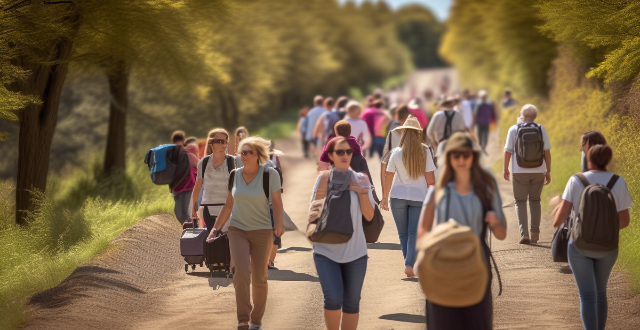Tourist attractions are ranked based on various factors that influence their appeal and popularity among travelers. These include natural beauty, cultural significance, recreational opportunities, accessibility, safety, and sustainability. The ranking of a tourist attraction depends on a combination of these factors, which collectively contribute to its overall appeal and attractiveness as a travel destination.

Factors Contributing to a Tourist Attraction's Ranking
Tourist attractions are ranked based on various factors that influence their appeal and popularity among travelers. These factors can be broadly categorized into the following categories:
Natural Beauty and Landscape
- Scenery: The visual appeal of a location, including mountains, beaches, forests, and other natural elements.
- Biodiversity: The variety of flora and fauna present in an area, which can attract nature enthusiasts and photographers.
- Geological Features: Unique geological formations or landmarks that add to the overall beauty of the landscape.
Cultural and Historical Significance
- Historical Sites: Places with significant historical events or eras associated with them, such as ancient ruins, monuments, and museums.
- Cultural Heritage: Traditions, customs, and practices that have been passed down through generations and are unique to a particular region or community.
- Architectural Wonders: Buildings or structures designed by renowned architects or representing a specific architectural style.
Entertainment and Recreational Opportunities
- Amusement Parks and Water Parks: Facilities offering thrilling rides, water slides, and other recreational activities for families and children.
- Shopping and Dining: A wide range of shopping options and dining experiences catering to different tastes and preferences.
- Nightlife: Entertainment venues such as bars, clubs, and live music performances available during the evening hours.
Accessibility and Infrastructure
- Transportation: Ease of reaching the destination through various modes of transportation like flights, trains, buses, or cars.
- Accommodation: Availability of suitable lodging options ranging from budget-friendly to luxury hotels and resorts.
- Facilities: Basic amenities like restrooms, parking spaces, and food courts that enhance the overall visitor experience.
Safety and Security
- Crime Rate: Low crime rates ensure the safety of tourists while they explore the attraction.
- Emergency Services: Availability of medical assistance, police stations, and firefighting services within close proximity to the attraction.
- Safety Measures: Implementation of safety protocols and guidelines to minimize potential risks and hazards at the attraction.
Sustainability and Environmental Impact
- Eco-Friendly Practices: Adoption of sustainable practices to reduce the environmental footprint of the attraction.
- Conservation Efforts: Initiatives aimed at protecting natural habitats and preserving endangered species in the surrounding areas.
- Community Engagement: Involvement of local communities in tourism activities, promoting responsible tourism practices and supporting local economies.
In conclusion, the ranking of a tourist attraction depends on a combination of these factors, which collectively contribute to its overall appeal and attractiveness as a travel destination.